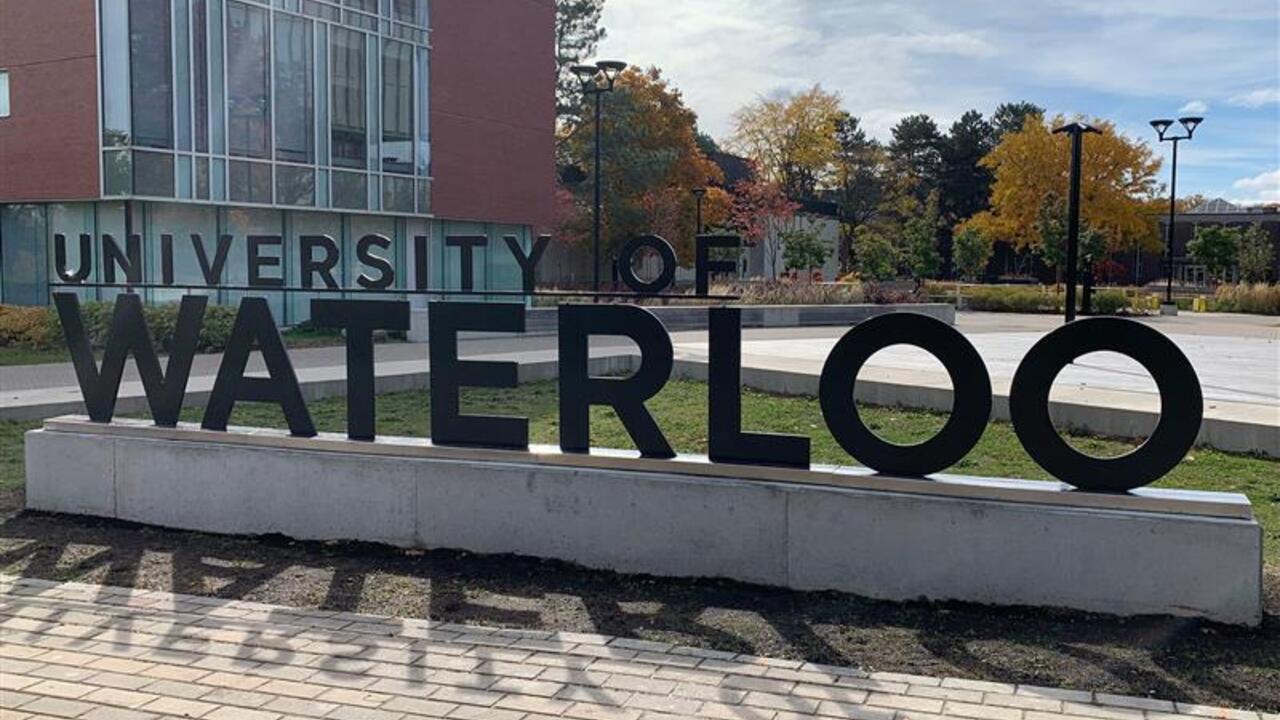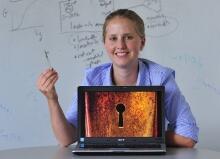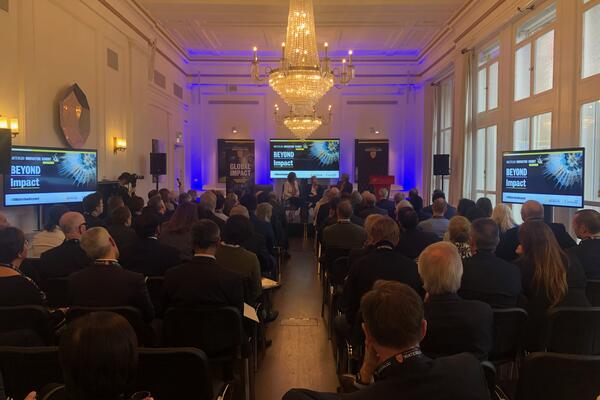
University of Waterloo researcher leads quantum security innovation
A breakthrough that could keep secret information safe from prying eyes would prove key to bringing quantum computing into real-world use.

A breakthrough that could keep secret information safe from prying eyes would prove key to bringing quantum computing into real-world use.
By Media RelationsWATERLOO, Ont. (Tuesday, Jan. 24, 2012) - A breakthrough that could keep secret information safe from prying eyes would prove key to bringing quantum computing into real-world use, according to a team that includes a researcher at the University of Waterloo’s Institute for Quantum Computing.
The breakthrough, published in the current issue of Science, addresses a challenge to the mainstream use of quantum computers: how to keep information secure when using shared servers. Until now, one of the greatest challenges quantum researchers faced was how to keep that data secure on servers.
Researchers in Canada, Austria, Singapore and the UK, including Anne Broadbent, post-doctoral fellow at the Institute for Quantum Computing in Waterloo, are behind an innovation called blind quantum computing, which ensures that no one but the sender can read quantum information sent to a remote central server, known as the cloud, even the server itself.
“This is a very strong security guarantee,” said Broadbent, who co-invented the theoretical protocol that was used in the recent experiments. “It holds no matter what computational power we ascribe to the adversary attempting to spy on the communications.”
In the experiment conducted in Vienna, data is encoded particles of light, known as photons. Photons are quantum bits, or qubits, used for computation, which can be transmitted over long distances. Thanks to the way the qubits are used, neither an eavesdropper nor the quantum computer itself can decipher the information they contain, making everyone but the original sender essentially blind to the data. But more than just keeping the information hidden, blind quantum computing allows the servers to actually process the data by using quantum computing without knowing what information it contains.
“When you think about it, it’s very highly improbable that it should be possible at all,” said Broadbent, who is also a junior fellow with the Canadian Institute for Advanced Research.
Broadbent, Elham Kashefi of the School of Informatics at the University of Edinburgh, and Joseph Fitzsimons of the Centre for Quantum Technologies at the National University of Singapore published the theoretical work that led to this experimental implementation back in 2009. Stefanie Barz, Anton Zeilinger and Philip Walther of the University of Vienna and Austrian Academy of Sciences carried out the recent experiment in Austria. All six co-authored the Science article.
“I think this collaboration is a great example of a theoretical result providing a new direction to experimental research,” said Broadbent. “I think such interactions are very positive for the future of science.”
Widely considered the future of computing, quantum computers are already known to outperform their present-day counterparts at many tasks. First-generation quantum computers will likely be housed in a few specialized facilities, with remote servers used to process and store data.
Image:

Anne Broadbent, Institute for Quantum Computing.
About the University of Waterloo
In just half a century, the University of Waterloo, located at the heart of Canada’s Technology Triangle, has become one of Canada’s leading comprehensive universities with 34,000 full- and part-time students in undergraduate and graduate programs. Waterloo, as home to the world’s largest post-secondary co-operative education program, embraces its connections to the world and encourages enterprising partnerships in learning, research and discovery. In the next decade, the university is committed to building a better future for Canada and the world by championing innovation and collaboration to create solutions relevant to the needs of today and tomorrow. For more informationabout Waterloo, visit www.uwaterloo.ca.
Media Contact:
Pamela Smyth
Media Relations Officer
University of Waterloo
519.888.4777
psmyth@uwaterloo.ca
www.newsrelease.uwaterloo.ca
Waterloo news release no. 8

Read more
Serapis Labs develops prototype for a testing kit that is simple enough for anyone to use

Read more
Leaders tell Waterloo Innovation Summit to fund basic research to commercialize unexpected outcomes

Read more
From 74 engineering students in 1957 to 198,000 alumni six decades later
The University of Waterloo acknowledges that much of our work takes place on the traditional territory of the Neutral, Anishinaabeg and Haudenosaunee peoples. Our main campus is situated on the Haldimand Tract, the land granted to the Six Nations that includes six miles on each side of the Grand River. Our active work toward reconciliation takes place across our campuses through research, learning, teaching, and community building, and is co-ordinated within the Office of Indigenous Relations.